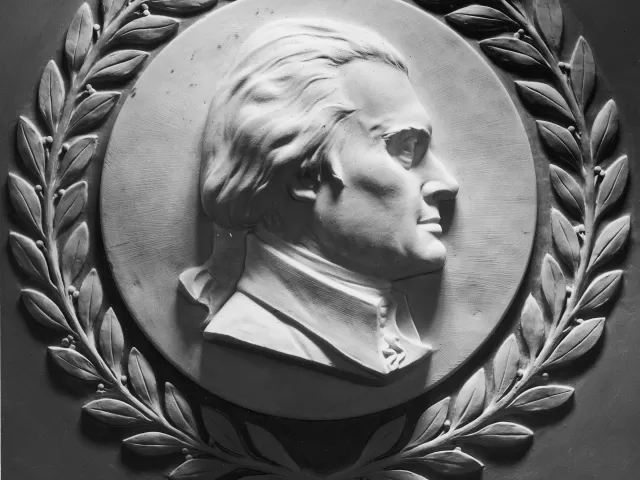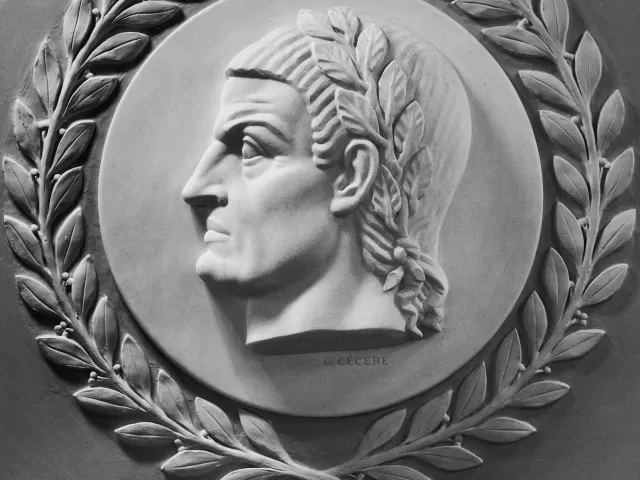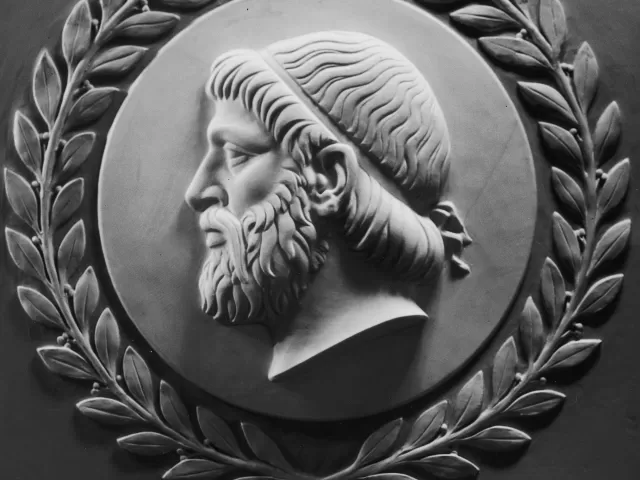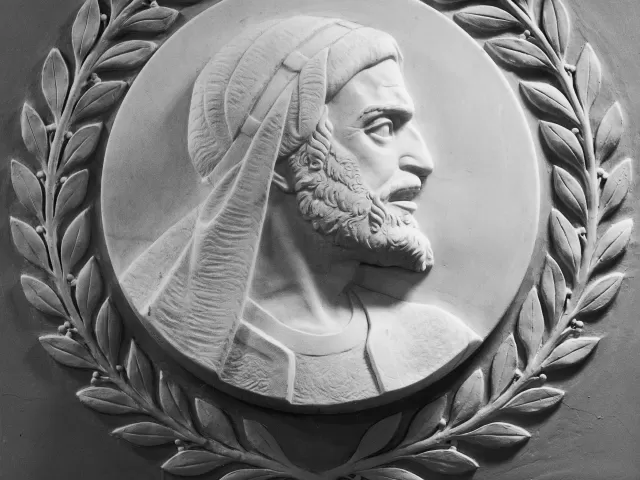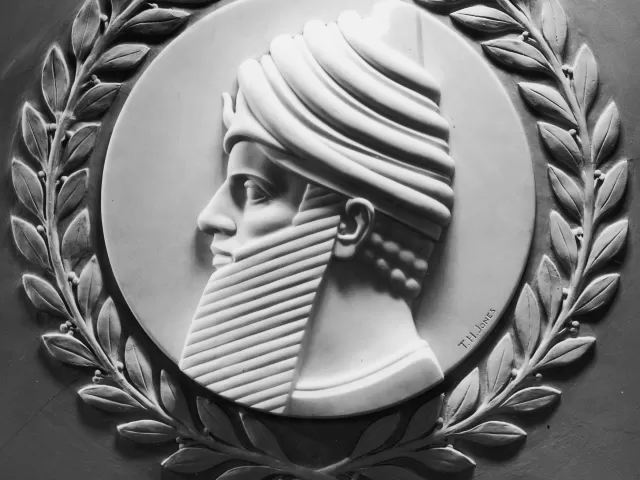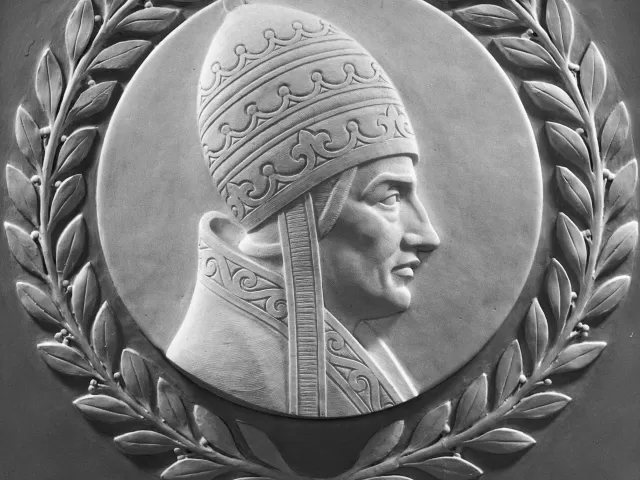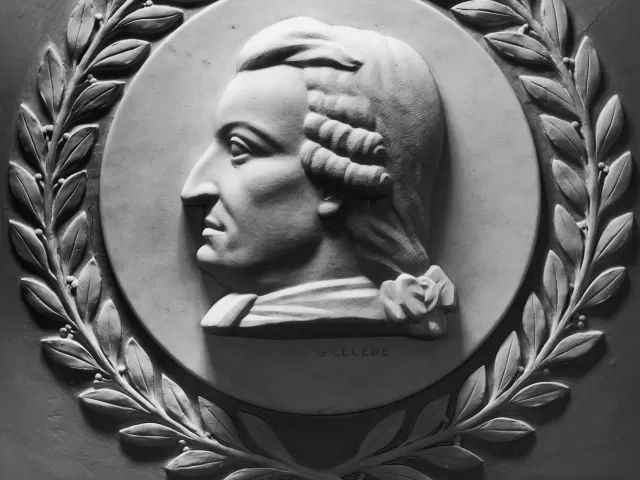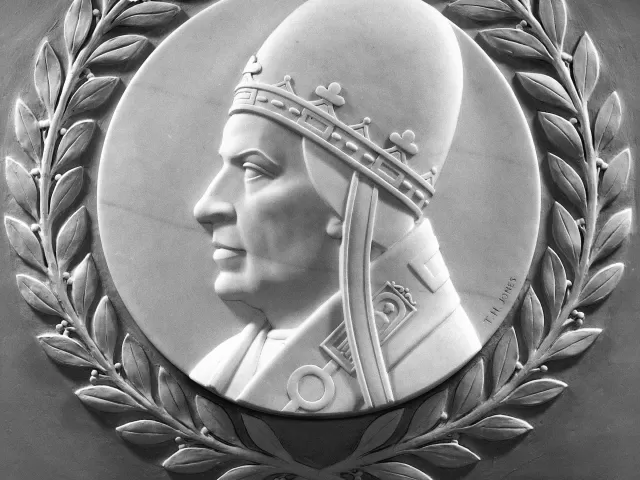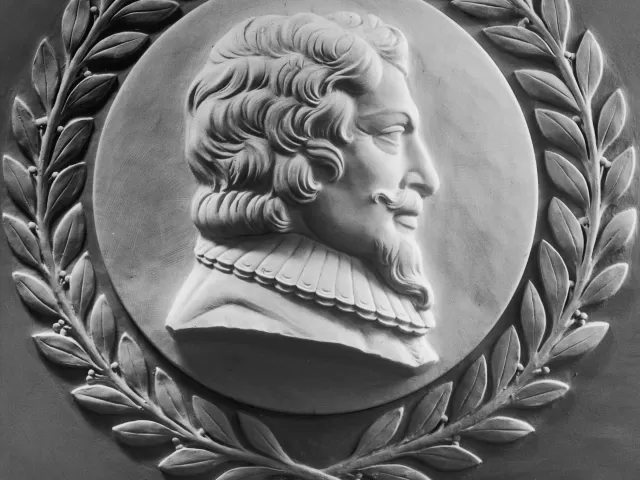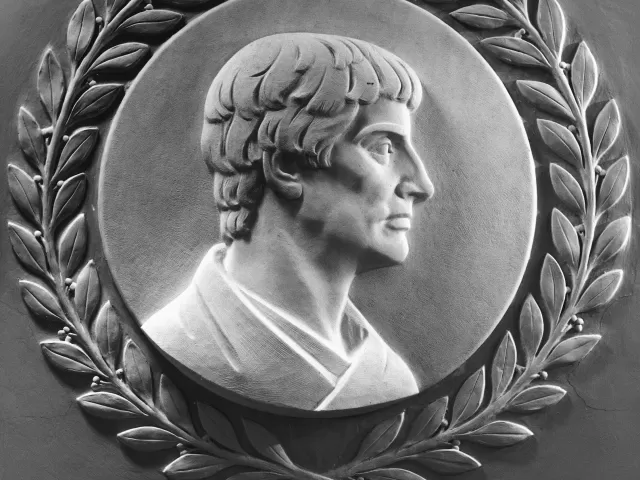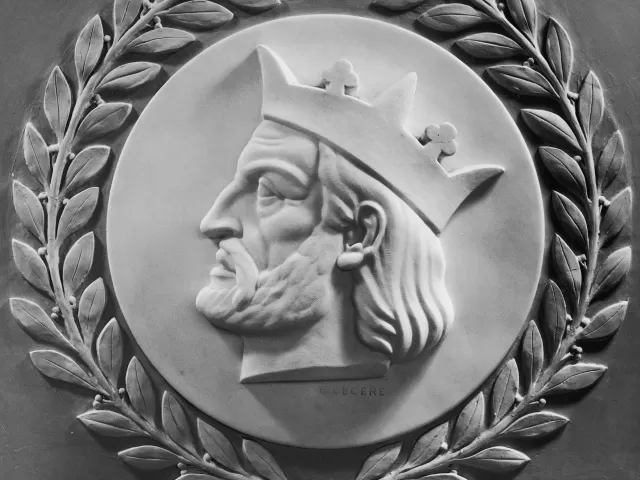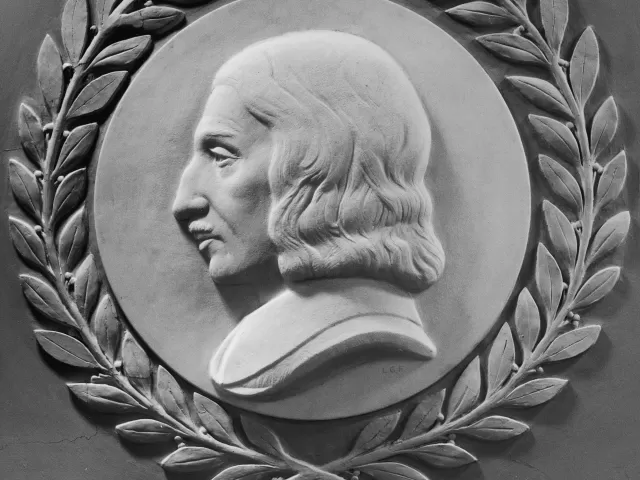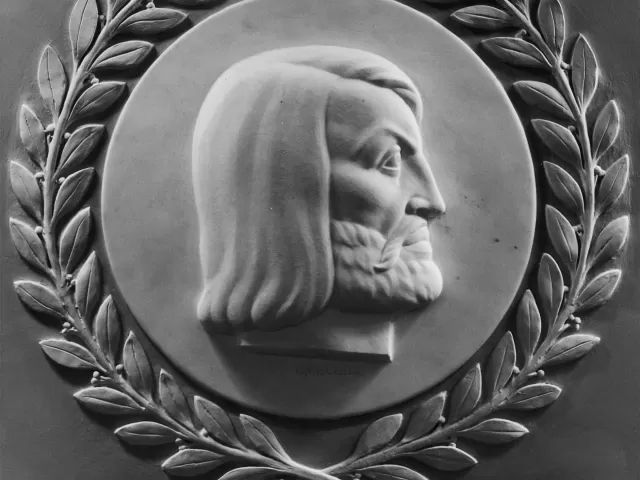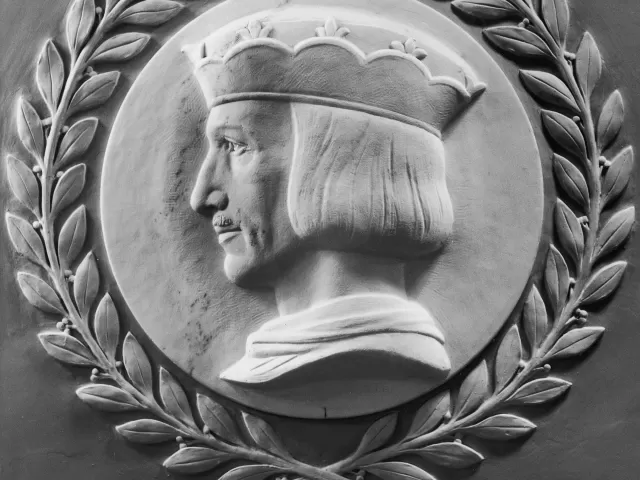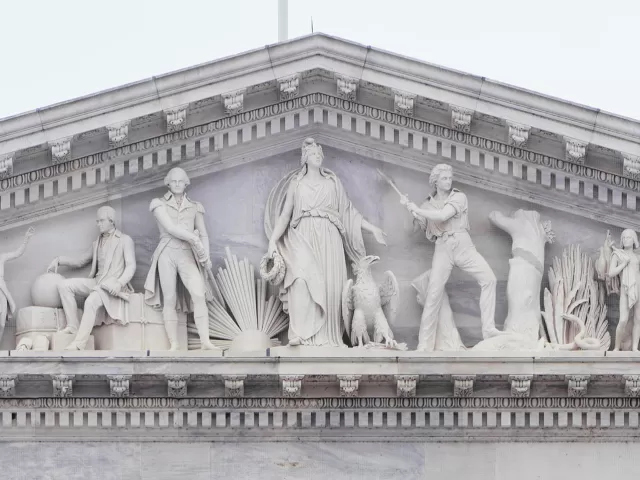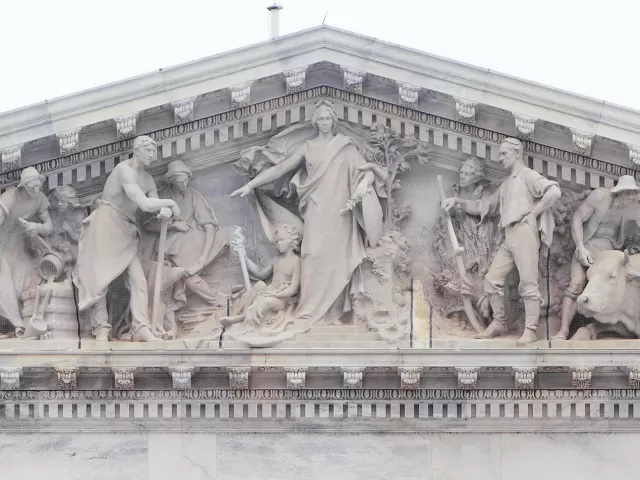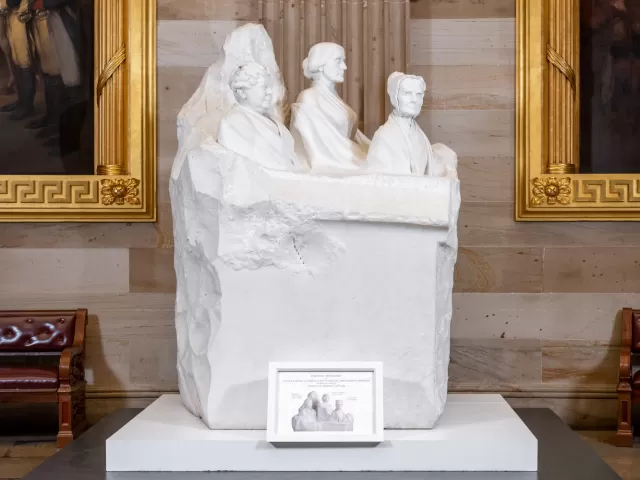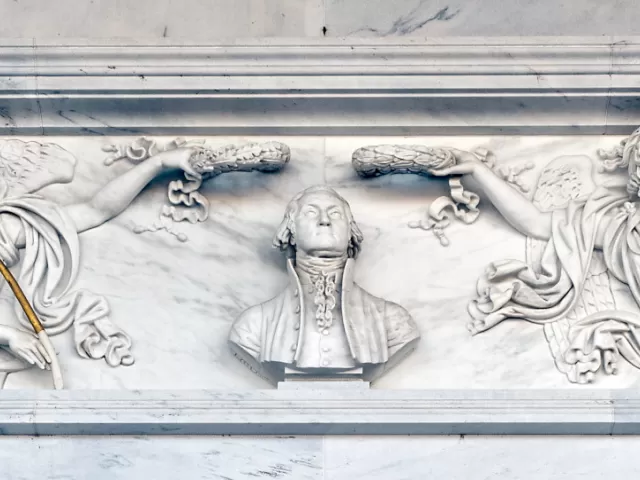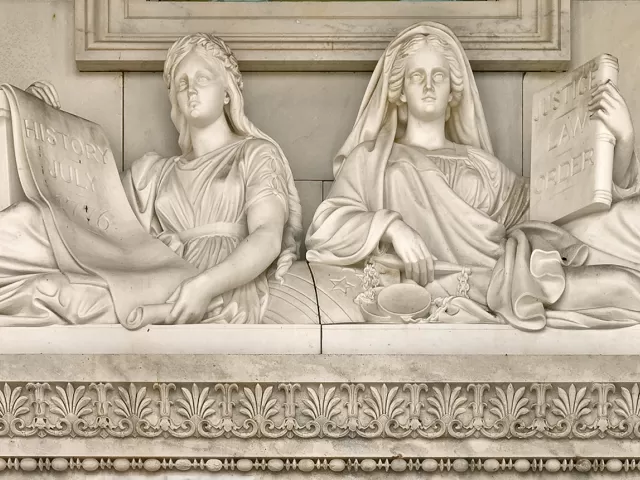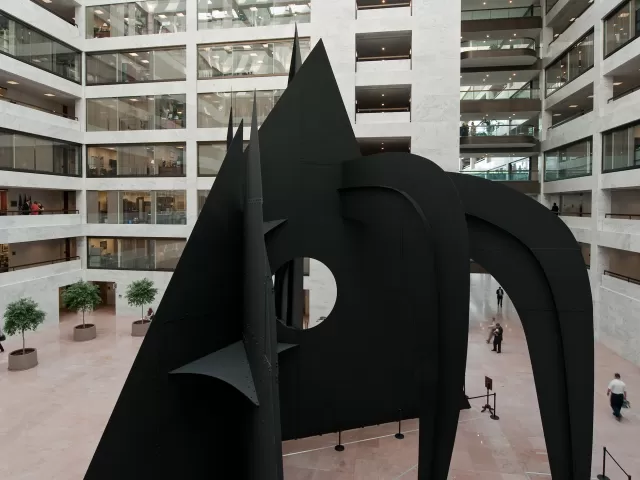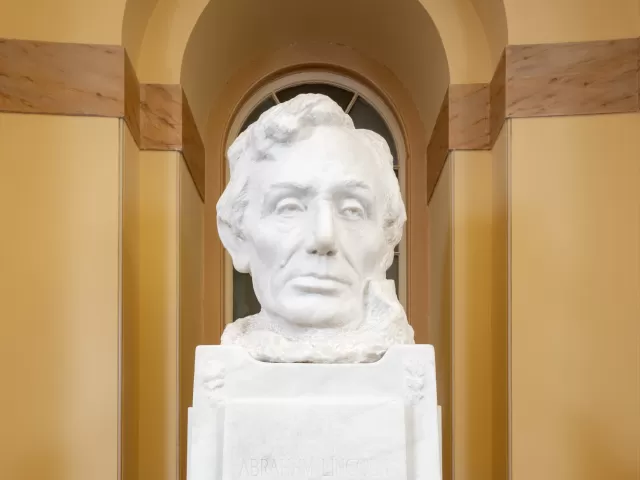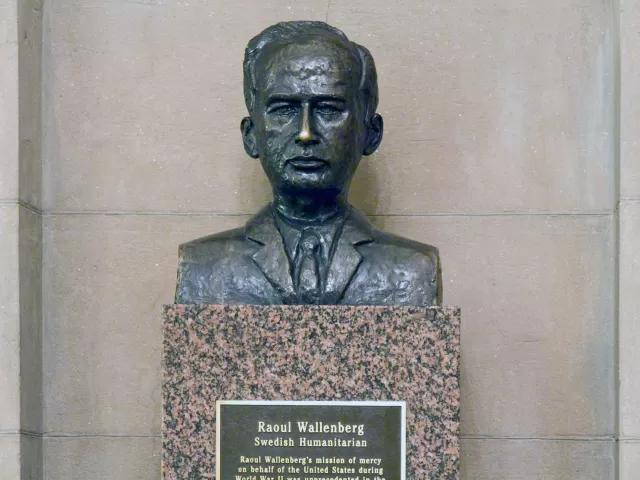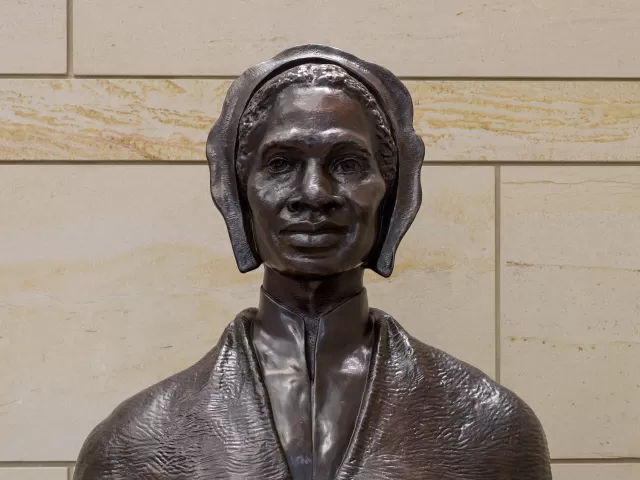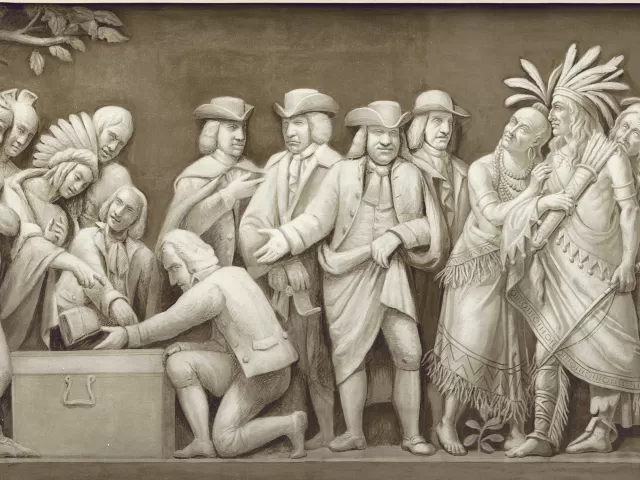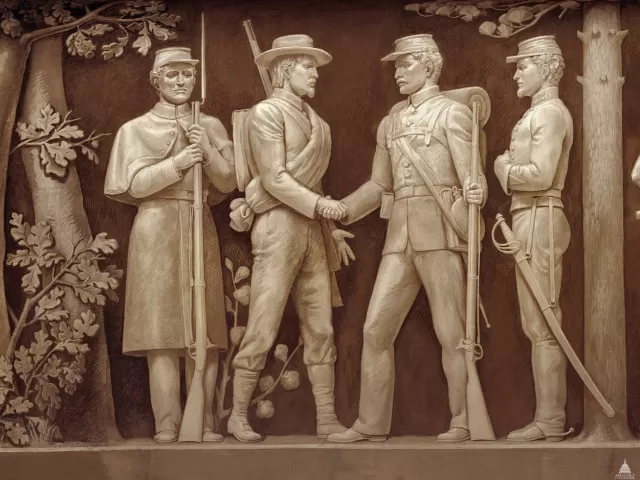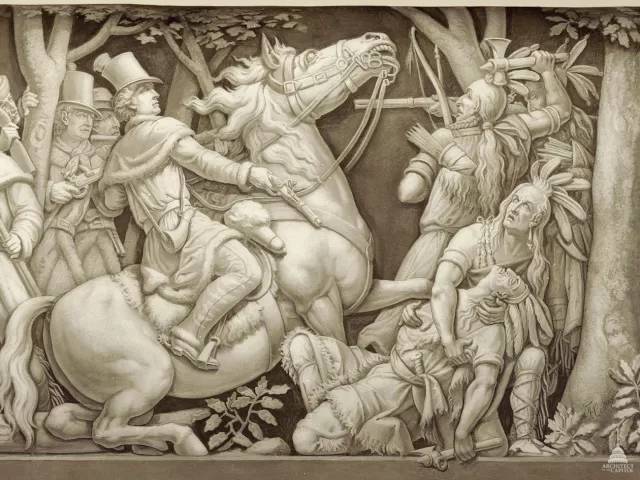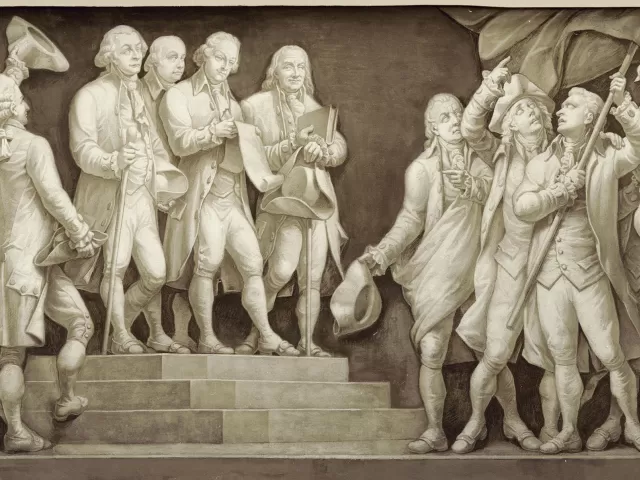Displaying 421 - 450 of 483 Clear
Highlight
Thomas Jefferson (1743-1826) Third President of the United States. Wrote the Declaration of Independence and the Statute of Virginia for Religious Freedom.
Highlight
Justinian I (c. 483-565) Byzantine emperor. Appointed Tribonian to compile and consolidate the Roman legal code into the Justinian Code, which he supplemented with a collection of rulings and precedents.
Highlight
Lycurgus (c. 900 B.C.) Semimythical Greek legislator. Traditional author of laws and institution of Sparta.
Highlight
Maimonides (1135-1204) Jewish philosopher of Cordova, Spain. Compiled a systematic exposition of the whole of Jewish law as contained in the Pentateuch and in Talmudic literature.
Highlight
Hammurabi (fl. c. 1792-1750 B.C.) King of Babylonia. Author of the Code of Hammurabi, which is recognized in legal literature as one of the earliest surviving legal codes.
Highlight
Innocent III (1161-1216) Medieval pope. Student of canon and civil law, who, like Gregory IX, preserved the remnants of Roman law during the Dark Ages.
Highlight
George Mason (1726-1792) American political leader. Drafted the Virginia Constitution and Declaration of Rights in 1776; was a member of the constitutional convention of 1787; led opposition to the ratification of the Constitution until the Bill of Rights was added.
Highlight
Gregory IX (c. 1147-1241) Medieval pope. Author of a compilation of decretals (i.e., authoritative decisions) on canon law; during a critical period he was instrumental in maintaining the remnants of Roman law.
Highlight
Hugo Grotius (1583-1645) Dutch statesman. Advocate-General of Holland and Zeeland; author of On the Law of War and Peace, the first treatise on international law.
Highlight
Gaius (c. 110-180) Roman jurist. Author of numerous works, the most noted being the Institutes, a complete exposition of the elements of Roman law that were the foundation of Roman civil law.
Highlight
Alfonso X, the "Wise" (1221-1284) King of Le'acute and Castile. Author of the Royal Code, a compilation of local legislation for general use. Originator of The Seven Parts, the code used as a basis for Spanish jurisprudence.
Highlight
Jean Baptiste Colbert (1619-1683) French finance minister and controller general under Louis XIV. Codified commercial, maritime, and colonial ordinances; reformed the French legal system.
Highlight
Simon de Montfort (1200-1265) English statesman. Advocated representative government; established an early form of representative government in England.
Highlight
Edward I (1239-1307) King of England. Founded the parliamentary constitution of England. Eliminated the divisive political effects of the feudal system.
Highlight
The Progress of Civilization features figures that represent the early days of America along with the diversity of human endeavor.
Highlight
Apotheosis of Democracy features an allegorical group of "Peace Protecting Genius" and figures representing two great sources of wealth.
Highlight
The Genius of America features figures of America, Justice and Hope. The entire pediment is 81 feet 6 inches in length and the figures are 9 feet high.
Highlight
This group portrait monument to the pioneers of the woman suffrage movement, which won women the right to vote in 1920, was sculpted from an 8-ton block of marble in Carrara, Italy. The monument features portrait busts of three movement leaders: Elizabeth Cady Stanton, Susan B. Anthony and Lucretia
Highlight
The two winged figures, hovering in the air, hold laurel wreaths above the bust of the George Washington. Fame, on the right, also holds a trumpet; Peace, on the left, a palm branch.
Highlight
Justice and History features two draped female figures reclining against a globe.
Highlight
In the niche above the entablature on the south wall of National Statuary Hall stands the heroic-sized figure of Liberty.
Highlight
This piece is artist Alexander Calder's only work that combined a separate mobile and a stabile (or standing sculpture). In 2016, the clouds were removed after a structural safety analysis was completed. They will be refabricated and reinstalled as funding becomes available.
Highlight
Abraham Lincoln's bust was carved directly from the block of marble rather than creating a copy of a plaster cast made from a clay model. Sculpted by Gutzon Borglum, best known for his sculptures at Mount Rushmore, South Dakota.
Highlight
Raoul Wallenberg was a Swedish humanitarian who worked at his country's legation in Budapest during World War II and used his diplomatic status to save the lives of tens of thousands of Jews threatened by the occupying Nazi forces and their Hungarian collaborators. His determination and
Highlight
Sojourner Truth's bust is the first sculpture to honor an African American woman in the United States Capitol.
Highlight
William Penn is shown at center with the Delaware Indians at the time of the Treaty of Shackamaxon. This treaty formalized the purchase of land in Pennsylvania and cemented an amicable relationship between the Quakers and the Indians for almost a hundred years. This scene was that last one on which
Highlight
A Confederate soldier and a Union soldier shake hands, marking the reunion of the country after the devastation of the Civil War. A cotton plant and a northern pine tree symbolize the South and the North, respectively. This is the first of Allyn Cox's three scenes. (1865)
Highlight
General George Washington, on horseback, receives the sword of surrender from Major General O'Hare, who represented Lord Cornwallis after his defeat at Yorktown, the last battle of the American Revolution. (1781)
Highlight
Tecumseh, a brilliant Indian chief, warrior and orator, is shown being fatally shot by Colonel Johnson at the Battle of the Thames in Upper Canada during the War of 1812. Tecumseh and his followers joined forces with the British to resist the encroachment of settlers on Indian territory. With
Highlight
This idealized depiction shows the principal authors of the Declaration of Independence, John Adams, Thomas Jefferson and Benjamin Franklin, reading the document to colonists. (1776)
